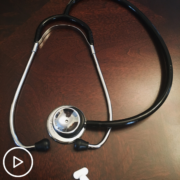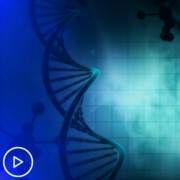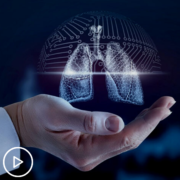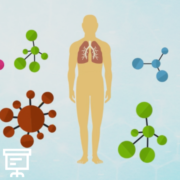A familiar name on the tip of your tongue, keys misplaced, a train of thought derailed in the middle of a sentence. If what I’ve just described sounds familiar, you may be experiencing symptoms of “chemobrain” – a name for the cognitive (how you process and recall information) difficulties associated with cancer treatment.
Although one of the most frustrating side effects of chemotherapy, not long ago, the medical profession was skeptical when patients who had completed treatment complained of a kind of mental haze or fog. Today, despite some lingering skepticism, research studies confirm what patients have long reported – that chemobrain is a real issue for people living with and beyond cancer.
The first of these studies [1] which was published in 2011 was conducted at Stanford University and used functional MRI imaging (fMRI) to compare the brain images of healthy women and women with breast cancer. The study found that not only did brain activity differ, but that those patients who had undergone chemotherapy had additional specific differences and decreases in executive function – the mental processes that enable us to plan, focus attention, remember instructions, and juggle multiple tasks successfully.
Signs and Symptoms of Chemobrain
A more formal term – post-cancer cognitive impairment (PCCI) – is used by researchers to describe a group of symptoms, which include slow mental processing, difficulty concentrating, organizing, and multitasking. Things you could do easily before cancer are now more difficult.
Symptoms can also include:
- memory loss – forgetting things that you normally remember
- tiredness and mental fogginess
- struggling to think of the right word for a familiar object
- difficulty following the flow of a conversation
- confusing dates and appointments
- misplacing everyday objects like keys and glasses
These symptoms can be especially frustrating when you are at work or in social situations. “It can be difficult to explain to others what we are going through,” explains therapist Karin Sieger [2]. “I like to use the example of a computer. If our brain was a computer used to running 6 apps and multi-tasking for example on Facebook, Twitter, watching TV and doing WhatsApp at any given time, with chemo brain our brain may be able to use one app only, and even then only for a short period of time. It will also take a lot longer to re-charge.”
What Causes Chemobrain?
It’s still not clear how many people with cancer get chemobrain or which drugs cause it. People who had high doses of chemotherapy may report memory problems, but even those who had standard doses have also reported memory changes.
Cyclophosphamide, Adriamycin, 5-FU, and Taxol seem to be particular culprits, but there are others that can cause the condition. Tamoxifen, and to a lesser degree, aromatase inhibitors may also have a negative effect on cognition.
Research also suggests that a combination of factors, including the stress and anxiety of a cancer diagnosis and side effects of treatment such as fatigue, anaemia, sleep disturbances or hormonal changes can also play a part.
Who Gets Chemobrain?
When it comes to answering the question of which patients get chemobrain, studies have reported a wide range of different figures, ranging from 17% to 60%. The condition can affect people with different types of cancer and at different times. It affects men and women of all ages, although people might be more likely to have the condition if they are older or already have problems with memory or anxiety and depression.
Can I Reduce The Symptoms Of Chemobrain?
There are several things that you can do to help you cope better with chemobrain.
Make sleep a priority
Research has found that not sleep deprivation can affect our ability to commit new things to memory and consolidate any new memories we create. Getting enough sleep is a state that optimizes the consolidation of newly acquired information in memory. [3] Even a short nap can improve your memory recall.
Take regular exercise
Studies have shown that regular exercise can improve memory as physical activity will increase blood flow to your whole body, including your brain. [4] There are many benefits to exercise. Not only does it help reduce the symptoms of fatigue (which exacerbates cognitive processing) exercise encourages your body to release endorphins – often called ‘feel good hormones’. When released, endorphins can lift your mood and sense of well-being. Easing stress and elevating mood may also ease chemobrain symptoms.
Keep your mind active
Just as physical activity helps keep your body in shape, mentally stimulating activities help keep your brain in shape too. Doing crosswords, sudoku and puzzles will help to keep your mind exercised. You may also like to try computer programs that are designed to improve memory and attention span.
Practice mindfulness meditation
Research has shown that practicing mindfulness can improve memory recall in just eight weeks. Meditation has also been shown to improve standardized test scores and working memory abilities after just two weeks. [5]
Eat more berries
More research is needed in this area, but some studies show that phytochemical-rich foods, such as blueberries, are effective at reversing age-related deficits in memory. [6] Blueberries are a major source of flavonoids, in particular anthocyanins and flavanols. Although the precise mechanisms by which these plant-derived molecules affect the brain are unknown, they have been shown to cross the blood brain barrier after dietary intake. It’s believed that they exert their effects on learning and memory by enhancing existing neuronal (brain cell) connections, improving cellular communications and stimulating neuronal regeneration.
Ten Tips to Help You Cope With Chemobrain
Below you’ll find a list of everyday self-help tips which will help restore your confidence at work and in social situations when you feel brain fog descend.
- Lists are your friend. Write daily lists about the errands you need to run, things you need to buy and where you have left important things.
- Carry a notebook with you to keep track of daily activities and things you want to remember. Make use of daily planners, wall planners, smart phones, and other organizers.
- Put sticky notes as reminders in places where you will easily see them.
- Say information you want to remember out loud five or six times to help fix it in your memory.
- Try linking a visual image with the information you want to remember.
- Leave a message on your answering machine or set an alert on your phone to remind yourself of something important.
- Get in the habit of keeping everyday items like your keys and cell phone in a regular place for easy retrieval, for example a basket or table by your front door.
- Avoid trying to do too many things at the same time. Concentrate on one task at a time and don’t multitask. Put your phone away, close your email applications and any unnecessary browser windows on your computer. Concentrate fully on the one task you need to complete.
- Plan ahead. List your 3 most important tasks to deal with the night before, so you can hit the ground running the next day.
- Do the most difficult tasks of the day first thing when you are most alert. If a task is too big to complete in one day, divide it into smaller tasks to be spread out over several days.
When To Seek Further Support
For most patients, chemobrain improves within a year after completing chemotherapy, although around 10-20% of people may have long-term effects even ten years after treatment. However, these side effects should be stable. If you have tried self-help techniques but the symptoms are not improving, you should speak with your doctor who may refer you to a neuropsychologist.
Neuropsychologists are psychologists with special training that prepares them to help people experiencing trouble in areas such as attention, new learning, organization and memory. A neuropsychologist will do a complete evaluation and determine if there are any treatable problems such as depression, anxiety, and fatigue. It’s important to make sure you’re receiving treatment for any depression, anxiety, or sleep problems. Make sure you also have had your thyroid, vitamin D and B12 levels checked.
Chemobrain is a frustrating side-effect of treatment and a reminder that cancer isn’t done with us when treatment ends. It’s important to know that there is help available. Don’t ever feel you are alone when it comes to dealing with the ongoing effects of cancer. Talk to your doctor and reach out to your online patient community for support and practical tips on coping with chemobrain.
References
[1] Kesler, S.R. et al. Prefrontal Cortex and Executive Function Impairments in Primary Breast Cancer, Arch Neurol. 2011;68(11):1447-1453
[2] Karin Sieger
[3] Born, J., Rasch, B., & Gais, S. (2006). Sleep to Remember. The Neuroscientist, 12(5), 410–424.
[4] Erickson, K.I, et al. Exercise training increases size of hippocampus and improves memory Proceedings of the National Academy of Sciences Feb 2011, 108 (7) 3017-3022.
[5] Mrazek, M. D., Franklin, M. S., Phillips, D. T., Baird, B., & Schooler, J. W. (2013). Mindfulness Training Improves Working Memory Capacity and GRE Performance While Reducing Mind Wandering. Psychological Science, 24(5), 776–781.
[6] The Peninsula College of Medicine and Dentistry. “Getting Forgetful? Then Blueberries May Hold The Key.” ScienceDaily. 12 April 2008.
A Stanford Medicine X e-Patient scholar, Marie Ennis O’Connor is an internationally recognized keynote speaker, writer, and consultant on global trends in patient engagement, digital health and participatory medicine. Marie’s work is informed by her passion for embedding the patient voice at the heart of healthcare values. She writes about the experience of transitioning from breast cancer patient to advocate on her award-winning blog Journeying Beyond Breast Cancer.























